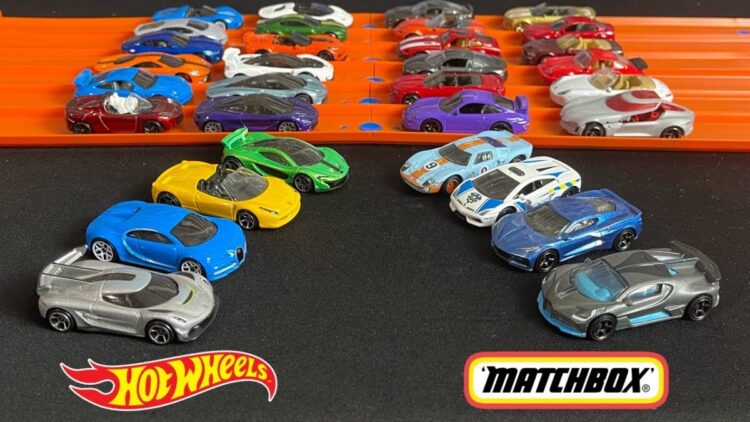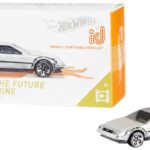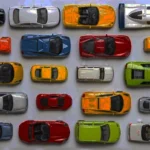The Ultimate Guide to Hot Wheels and Matchbox Cars: Similarities and Differences
Introduction
Hot Wheels and Matchbox cars are two of the most iconic brands in the toy car industry, captivating generations of children and collectors alike. Both brands offer a wide range of miniature vehicles, but they have distinct histories, designs, and features that set them apart. This comprehensive guide will explore the similarities and differences between Hot Wheels and Matchbox cars, delving into their origins, manufacturing processes, collector cultures, and the unique characteristics that define each brand.
Historical Background
Origins of Matchbox Cars
Matchbox cars were introduced in 1953 by Lesney Products, a British manufacturing company founded by Leslie Smith and Rodney Smith. The brand name “Matchbox” was inspired by the packaging of the toy cars, which resembled matchboxes. The first Matchbox car was a miniature road roller, and the line quickly expanded to include various vehicles, from cars and trucks to buses and construction equipment. Matchbox cars gained immense popularity for their affordability, durability, and realistic designs.
Origins of Hot Wheels
Hot Wheels were launched in 1968 by the American toy company Mattel, founded by Ruth and Elliot Handler. Unlike Matchbox, which focused on realistic replicas, Hot Wheels cars were designed to be fast, flashy, and fun. The first Hot Wheels car, the “Custom Camaro,” featured vibrant colors, sleek designs, and low-friction wheels that allowed it to zoom across surfaces at high speeds. Hot Wheels quickly became a sensation, revolutionizing the toy car industry with their emphasis on performance and style.
Design and Aesthetics
Matchbox Design Philosophy
Matchbox cars are known for their realistic designs and attention to detail. The brand focuses on creating miniature replicas of real-life vehicles, often partnering with automobile manufacturers to produce accurate models. Matchbox cars typically feature authentic paint jobs, logos, and intricate details that mimic the appearance of their full-sized counterparts. This commitment to realism has made Matchbox cars a favorite among collectors who appreciate accurate and detailed representations of vehicles.
Hot Wheels Design Philosophy
Hot Wheels cars are characterized by their bold, imaginative designs and emphasis on speed. The brand often takes creative liberties with vehicle designs, incorporating exaggerated features, vibrant colors, and futuristic elements. Hot Wheels cars are designed to perform well on tracks, with low-friction wheels and a lightweight construction that allows them to achieve high speeds and execute stunts. This focus on performance and aesthetics makes Hot Wheels cars appealing to both children and collectors who enjoy the excitement and creativity of the brand.
Manufacturing and Materials
Matchbox Manufacturing
Matchbox cars are typically made from die-cast metal, with plastic components for details such as windows, tires, and interiors. The die-casting process involves pouring molten metal into a mold to create the body of the car, resulting in a durable and detailed miniature vehicle. Matchbox cars are known for their high-quality construction and realistic finishes, with attention to detail that includes painted headlights, grille designs, and accurate scaling.
Hot Wheels Manufacturing
Hot Wheels cars are also made from die-cast metal, but the brand often incorporates more plastic components to achieve their lightweight design and high-speed performance. The wheels are a crucial aspect of Hot Wheels cars, designed to reduce friction and enhance speed on tracks. Hot Wheels cars undergo rigorous testing to ensure they can perform stunts and races effectively, with a focus on durability and performance. The manufacturing process emphasizes both aesthetic appeal and functional capabilities, resulting in cars that are not only visually striking but also fun to play with.
Collector Culture
Matchbox Collectors
Matchbox cars have a dedicated collector base that values the brand’s commitment to realism and historical accuracy. Collectors often seek out vintage Matchbox cars, limited edition models, and special series that feature unique designs or rare vehicles. The collector culture around Matchbox cars is characterized by an appreciation for the craftsmanship and detail of each model, with a focus on preserving the condition and authenticity of the cars. Matchbox collectors often participate in trade shows, auctions, and online forums to connect with fellow enthusiasts and expand their collections.
Hot Wheels Collectors
Hot Wheels collectors are drawn to the brand’s dynamic designs, performance features, and the thrill of collecting rare and unique models. The Hot Wheels collector community is vibrant and active, with numerous events, conventions, and online platforms dedicated to the hobby. Collectors often focus on specific themes, such as race cars, fantasy designs, or limited edition releases. The excitement of discovering rare variations, error cars, and exclusive models drives the passion of Hot Wheels collectors, who enjoy both the aesthetic and performance aspects of the brand.
Product Lines and Series
Matchbox Product Lines
Matchbox offers a wide range of product lines and series, catering to different interests and age groups. Some of the notable Matchbox product lines include:
- Mainline Series: The core collection of Matchbox cars, featuring a diverse range of vehicles from everyday cars to emergency vehicles and construction equipment.
- Real Working Rigs: A series focused on larger, detailed models of trucks and industrial vehicles with functional parts.
- Sky Busters: A line of die-cast aircraft, including commercial planes, military jets, and helicopters.
- Collectors Series: Limited edition models with premium details, packaging, and often higher price points, aimed at adult collectors.
- Adventure City: Aimed at younger children, this series features playsets and themed vehicles designed for imaginative play.
Hot Wheels Product Lines
Hot Wheels boasts a diverse array of product lines and series, each with its unique theme and appeal. Some of the prominent Hot Wheels product lines include:
- Basic Car Series: The mainline collection of Hot Wheels cars, featuring a vast array of designs, from realistic replicas to imaginative fantasy vehicles.
- Track Builder System: A line of tracks, accessories, and vehicles designed for creating custom racing and stunt tracks.
- Monster Trucks: A series of oversized, rugged trucks designed for off-road play and extreme stunts.
- Hot Wheels id: An innovative line that combines physical cars with digital play, allowing users to track performance and complete challenges using a smartphone app.
- Premium Series: High-end models with detailed designs, rubber tires, and premium packaging, aimed at collectors.
Marketing and Branding
Matchbox Marketing Strategies
Matchbox has traditionally marketed its cars as realistic and durable toys that appeal to children and collectors alike. The brand emphasizes its commitment to accuracy and quality, often highlighting the partnerships with automobile manufacturers and the detailed craftsmanship of each model. Matchbox’s marketing strategies include television commercials, print ads, and collaborations with popular franchises to create themed collections. The brand also engages with the collector community through events, social media, and exclusive releases.
Hot Wheels Marketing Strategies
Hot Wheels’ marketing strategies focus on the excitement and thrill of racing, stunts, and imaginative play. The brand often uses high-energy commercials, vibrant packaging, and interactive campaigns to capture the attention of children and collectors. Hot Wheels collaborates with various media franchises, including movies, video games, and sports, to create themed collections and limited edition releases. The brand also leverages digital platforms, such as the Hot Wheels id app and social media, to engage with fans and offer interactive experiences.
Impact on Pop Culture
Matchbox in Pop Culture
Matchbox cars have become a cultural icon, representing a blend of nostalgia and timeless appeal. The brand’s realistic designs and historical accuracy have made it a staple in toy collections, often evoking memories of childhood play and collecting. Matchbox cars have appeared in various forms of media, including movies, television shows, and literature, often symbolizing a connection to the past and the joy of simple, imaginative play. The brand’s influence extends beyond toys, with Matchbox-inspired merchandise, artwork, and even full-sized vehicles paying homage to the beloved miniature cars.
Hot Wheels in Pop Culture
Hot Wheels has made a significant impact on pop culture, with its bold designs and high-energy branding resonating with fans of all ages. The brand’s cars have been featured in movies, television shows, video games, and even music videos, often representing speed, creativity, and excitement. Hot Wheels’ collaborations with popular franchises, such as Star Wars, Marvel, and NASCAR, have further cemented its place in pop culture. The brand’s influence is evident in the widespread recognition of its logo, the iconic orange tracks, and the thrilling racing and stunt sets that have become synonymous with Hot Wheels.
Technological Innovations
Matchbox Technological Innovations
Matchbox has incorporated various technological innovations to enhance the realism and playability of its cars. Some of the notable advancements include:
- Real Working Rigs: Featuring functional parts, such as extendable ladders, rotating cranes, and opening doors, to enhance the play experience.
- Lights and Sounds: Some Matchbox cars and playsets include battery-operated lights and sounds to simulate real-life vehicle functions.
- Smart Cars: Integration of electronic chips and sensors in certain models to enable interactive features, such as tracking movements and responding to playsets.
Hot Wheels Technological Innovations
Hot Wheels is known for pushing the boundaries of toy car technology, with numerous innovations aimed at enhancing performance and interactivity. Some of the key technological advancements include:
- Low-Friction Wheels: Designed to reduce friction and increase speed, allowing Hot Wheels cars to perform well on tracks and stunts.
- Hot Wheels id: Combining physical cars with digital play, allowing users to track performance, complete challenges, and compete in virtual races using a smartphone app.
- Motorized Track Sets: Incorporating battery-operated motors to power tracks, launchers, and boosters for dynamic racing and stunts.
- Augmented Reality (AR): Exploring AR technology to create immersive play experiences that blend physical and digital elements.
Price Points and Accessibility
Matchbox Price Points
Matchbox cars are known for their affordability, making them accessible to a wide range of consumers. The brand offers a variety of price points, with basic
models typically priced around $1 to $3, and more detailed or limited edition models ranging from $5 to $20. Matchbox’s commitment to quality and realism at an affordable price has contributed to its enduring popularity among children and collectors.
Hot Wheels Price Points
Hot Wheels also offers a broad range of price points, catering to different budgets and preferences. Basic Hot Wheels cars are typically priced around $1 to $2, making them an affordable option for casual play and collecting. Premium models, limited editions, and track sets can range from $5 to $50 or more, depending on the features and complexity. Hot Wheels’ diverse product offerings ensure that there is something for everyone, from budget-conscious consumers to avid collectors.
Environmental and Social Responsibility
Matchbox Environmental Initiatives
Matchbox has taken steps to address environmental and social responsibility, focusing on sustainable practices and community engagement. Some of the key initiatives include:
- Eco-Friendly Packaging: Transitioning to more sustainable packaging materials, such as recycled cardboard and reduced plastic usage.
- Sustainable Materials: Exploring the use of recycled and biodegradable materials in the production of toy cars and playsets.
- Community Outreach: Partnering with educational programs and charitable organizations to promote learning and support communities.
Hot Wheels Environmental Initiatives
Hot Wheels has also embraced environmental and social responsibility, with initiatives aimed at reducing its environmental impact and giving back to communities. Key initiatives include:
- Sustainable Materials: Using recycled and sustainable materials in the production of cars and packaging.
- Eco-Friendly Packaging: Reducing plastic waste and transitioning to more sustainable packaging options.
- Philanthropy: Supporting charitable organizations and educational programs through donations, partnerships, and community engagement.
Conclusion
Hot Wheels and Matchbox cars are two of the most beloved and iconic brands in the toy car industry, each offering unique qualities and experiences that appeal to children and collectors alike. While Matchbox cars are celebrated for their realistic designs and historical accuracy, Hot Wheels cars captivate with their bold, imaginative aesthetics and high-speed performance. Both brands have evolved over the years, incorporating technological innovations, expanding their product lines, and engaging with their respective collector communities.
Despite their differences, Hot Wheels and Matchbox share common ground in their enduring popularity, commitment to quality, and ability to inspire creativity and joy. Whether you prefer the authentic replicas of Matchbox or the thrilling designs of Hot Wheels, both brands offer endless opportunities for play, collection, and nostalgia. By understanding the similarities and differences between Hot Wheels and Matchbox cars, enthusiasts and consumers can appreciate the unique qualities that make each brand special and continue to enjoy the timeless appeal of these miniature marvels.








